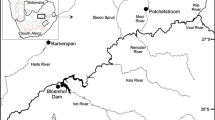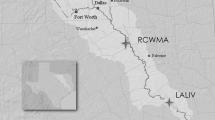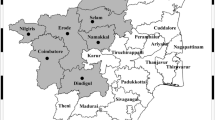Abstract
Black-crowned night heron (Nycticorax nycticorax) eggs have been identified as useful indicators for biomonitoring the environmental pollution in China. In this study, we investigated thirty eggs of black-crowned night heron collected from the upper Yangtze River (Changjiang) Basin, Southwest China, for the occurrence of legacy persistent organic pollutants (POPs), including polychlorinated dibenzo-p-dioxins and dibenzofurans (PCDD/Fs), organochlorine pesticides (OCPs), polychlorinated biphenyls (PCBs), and polybrominated diphenyl ethers (PBDEs). Our results showed a general presence of POPs in night heron eggs with OCPs being the dominant contaminants, having a geometric mean concentration of 22.2 ng g−1 wet weight (ww), followed by PCBs (1.36 ng g−1 ww), PBDEs (0.215 ng g−1 ww), and PCDD/Fs (23.0 pg g−1 ww). The concentration levels were found to be significantly higher in night heron eggs than in poultry eggs by one or two magnitude orders. Among OCP congeners, p,p′-DDE was found to be predominant in night heron eggs, with a geometric mean concentration of 15.1 ng g−1 ww. Furthermore, species-specific congener patterns in eggs suggested similar or different sources for different POPs, possibly associated with contaminated soil and parental dietary sources. Additionally, estimated daily intakes (EDIs) were used to evaluate non-carcinogenic and carcinogenic risk associated with consumption of bird eggs. Our results revealed non-negligible non-cancer and cancer risk for humans who consume wild bird eggs as a regular diet instead of poultry eggs.





Similar content being viewed by others
Data availability
All data generated or analyzed during this study are included in this published article (and its supplementary information files) and are available from the corresponding author on reasonable request.
References
Albanis TA, Hela D, Papakostas G, Goutner V (1996) Concentration and bioaccumulation of organochlorine pesticide residues in herons and their prey in wetlands of Thermaikos Gulf, Macedonia, Greece. Sci Total Environ 182:11–19. https://doi.org/10.1016/0048-9697(95)05030-2
Andersson PL, Haglund P, Tysklind M (1997) The internal barriers of rotation for the 209 polychlorinated biphenyls. Environ Sci Pollut Res 4:75–81
Atamaleki A, Sadani M, Raoofi A et al (2020) The concentration of potentially toxic elements (PTEs) in eggs: a global systematic review, meta-analysis and probabilistic health risk assessment. Trends Food Sci Technol 95:1–9. https://doi.org/10.1016/j.tifs.2019.11.003
Bouwman H, Pieters R, Polder A, Quinn L (2021) Ten bird species, six guilds, three habitats, and 59 chlorinated and brominated pops: what do 64 eggs from the largest economic hub of Southern Africa tell us? Arch Environ Contam Toxicol 81:347–366. https://doi.org/10.1007/s00244-021-00882-8
Braune BM, Mallory ML (2017) Declining trends of polychlorinated dibenzo-p-dioxins, dibenzofurans and non-ortho PCBs in Canadian Arctic seabirds. Environ Pollut 220:557–566. https://doi.org/10.1016/j.envpol.2016.10.003
Buck A, Carrillo-Hidalgo J, Camarero PR, Mateo R (2020) Organochlorine pesticides and polychlorinated biphenyls in common kestrel eggs from the Canary Islands: spatiotemporal variations and effects on eggshell and reproduction. Chemosphere 261. https://doi.org/10.1016/j.chemosphere.2020.127722
Champoux L, Boily M, Fitzgerald G (2017a) Thyroid hormones, retinol and clinical parameters in relation to mercury and organohalogen contaminants in great blue heron (Ardea herodias) Nestlings from the St. Lawrence River, Québec Canada. Arch Environ Contam Toxicol 72:200–214. https://doi.org/10.1007/s00244-017-0364-2
Champoux L, Rail JF, Lavoie RA (2017b) Polychlorinated dibenzo-p-dioxins, dibenzofurans, and flame retardants in northern gannet (Morus bassanus) eggs from Bonaventure Island, Gulf of St. Lawrence, 1994–2014. Environ Pollut 222:600–608. https://doi.org/10.1016/j.envpol.2016.09.055
Chen L, Qian Y, Jia Q et al (2022) Comprehensive risk assessment of organchlorine pesticides (Ocps) based on a large region-scale characterization of Ocps in freshwater sediments and multiple aquatic foods in China. Environ Pollut 308:119716. https://doi.org/10.2139/ssrn.3999039
Chung D, Lee JH, Lee SY et al (2022) Quantitative analysis and contamination profiles of PCBs, OCPs, and PAHs in black-tailed gull eggs in the Republic of Korea. Environ Monit Assess 194. https://doi.org/10.1007/s10661-022-09905-w
Connell DW, Fung CN, Minh TB et al (2003) Risk to breeding success of fish-eating Ardeids due to persistent organic contaminants in Hong Kong: evidence from organochlorine compounds in eggs. Water Res 37:459–467. https://doi.org/10.1016/S0043-1354(02)00294-4
Custer CM, Custer TW, Dummer PM et al (2016) Concentrations and spatial patterns of organic contaminants in tree swallow (Tachycineta bicolor) eggs at United States and binational Great Lakes Areas of Concern, 2010–2015. Environ Toxicol Chem 35:3071–3092. https://doi.org/10.1002/etc.3496
Custer TW, Bunck CM, Kaiser TE (1983) Organochlorine residues in Atlantic Coast black-crowned night-heron eggs. Colon Waterbirds 6:160–167
Custer TW, Dummer PM, Custer CM et al (2014) Contaminant exposure of birds nesting in Green Bay, Wisconsin, USA. Environ Toxicol Chem 33:1832–1839. https://doi.org/10.1002/etc.2609
Deng Y, Peng P, Jia L et al (2020) Atmospheric bulk deposition of polychlorinated dibenzo-p-dioxins and dibenzofurans (PCDD/Fs) in the vicinity of MSWI in Shanghai China. Ecotoxicol Environ Saf 196:110493. https://doi.org/10.1016/j.ecoenv.2020.110493
Dong YH, Wang H, An Q et al (2004) Residues of organochlorinated pesticides in eggs of water birds from Tai Lake in China. Environ Geochem Health 26:259–268. https://doi.org/10.1023/B:EGAH.0000039589.46698.2b
Eens M, Jaspers VLB, Van den Steen E et al (2013) Can starling eggs be useful as a biomonitoring tool to study organohalogenated contaminants on a worldwide scale? Environ Int 51:141–149. https://doi.org/10.1016/j.envint.2012.11.003
Fang L, Zheng M, Zhang B et al (2007) Polychlorinated dibenzo-p-dioxins and dibenzofurans in eggs of eight avian species from Dongting Lake, China. Chemosphere 69:411–421. https://doi.org/10.1016/j.chemosphere.2007.04.079
Gao F, Luo XJ, Yang ZF et al (2009) Brominated flame retardants, polychlorinated biphenyls, and organochlorine pesticides in bird eggs from the Yellow River Delta, North China. Environ Sci Technol 43:6956–6962. https://doi.org/10.1021/es901177j
Gkotsis G, Nika MC, Athanasopoulou AI et al (2023) Advanced throughput analytical strategies for the comprehensive HRMS screening of organic micropollutants in eggs of different bird species. Chemosphere 312. https://doi.org/10.1016/j.chemosphere.2022.137092
Grimalt JO, Van Drooge BL, Ribes A et al (2004) Persistent organochlorine compounds in soils and sediments of European high altitude mountain lakes. Chemosphere 54:1549–1561. https://doi.org/10.1016/j.chemosphere.2003.09.047
Han D, Currell MJ (2017) Persistent organic pollutants in China’s surface water systems. Sci Total Environ 580:602–625. https://doi.org/10.1016/j.scitotenv.2016.12.007
Hao Y, Zheng S, Wang P et al (2021) Ecotoxicology of persistent organic pollutants in birds. Environ Sci Process Impacts 23:400–416. https://doi.org/10.1039/d0em00451k
He W, Ye M, He H et al (2020) The decomposition and ecological risk of DDTs and HCHs in the soil-water system of the Meijiang River. Environ Res 180. https://doi.org/10.1016/j.envres.2019.108897
Henny CJ, Blus LJ, Krynitsky AJ, Bunck CM (1984) Current impact of DDE on black-crowned night-herons in the intermountain west. J Wildl Manage 48:1–13
Herzke D, Berger U, Kallenborn R et al (2005) Brominated flame retardants and other organobromines in Norwegian predatory bird eggs. Chemosphere 61:441–449. https://doi.org/10.1016/j.chemosphere.2005.01.066
Hoshi H, Minamoto N, Iwata H et al (1998) Organochlorine pesticides and polychlorinated biphenyl congeners in wild terrestrial mammals from Croatia: interspecies comparison of residue levels and compositions. Chemosphere 36:3211–3221. https://doi.org/10.1016/j.chemosphere.2015.05.026
Huang Q, Wei L, Bignert A et al (2019) Organophosphate flame retardants in heron eggs from upper Yangtze River basin, southwest China. Chemosphere 236:124327. https://doi.org/10.1016/j.chemosphere.2019.07.058
Kocagöz R, Onmus O, Onat I et al (2014) Environmental and biological monitoring of persistent organic pollutants in waterbirds by non-invasive versus invasive sampling. Toxicol Lett 230:208–217. https://doi.org/10.1016/j.toxlet.2014.01.044
Koponen J, Rantakokko P, Airaksinen R, Kiviranta H (2013) Determination of selected perfluorinated alkyl acids and persistent organic pollutants from a small volume human serum sample relevant for epidemiological studies. J Chromatogr A 1309:48–55. https://doi.org/10.1016/j.chroma.2013.07.064
Letcher RJ, Gebbink WA, Sonne C et al (2009) Bioaccumulation and biotransformation of brominated and chlorinated contaminants and their metabolites in ringed seals (Pusa hispida) and polar bears (Ursus maritimus) from East Greenland. Environ Int 35:1118–1124. https://doi.org/10.1016/j.envint.2009.07.006
Li H, Liu Y, Lan Y et al (2022) A nationwide survey of 20 legacy brominated flame retardants in indoor dust from China: continuing occurrence, national distribution, and implication for human exposure. Environ Sci Pollut Res 58828–58842. https://doi.org/10.1007/s11356-022-19850-3
Li J, Zhang G, Qi S et al (2006) Concentrations, enantiomeric compositions, and sources of HCH, DDT and chlordane in soils from the Pearl River Delta, South China. Sci Total Environ 372:215–224. https://doi.org/10.1016/j.scitotenv.2006.09.023
Lyu B, Li J, Wu Y (2022) Characterizing the exposome of food contamination and China total diet study: project for improving food safety risk assessment in China. China CDC Wkly 4:157–160. https://doi.org/10.46234/ccdcw2022.039
Marek P, Wojciech P, Sebastian MS, Mikolajczyk Jadwiga P-P (2019) Poultry eggs as a source of PCDD/Fs, PCBs, PBDEs and PBDD/Fs. Chemosphere 223:651–658. https://doi.org/10.1016/j.chemosphere.2019.02.023
de A MR, da Costa Lopes AS, de Souza LC et al (2016) DDT concentration in fish from the Tapajós River in the Amazon region, Brazil. Chemosphere 153:340–345. https://doi.org/10.1016/j.chemosphere.2016.03.054
Miller A, Nyberg E, Danielsson S et al (2014) Comparing temporal trends of organochlorines in guillemot eggs and Baltic herring: advantages and disadvantage for selecting sentinel species for environmental monitoring. Mar Environ Res 100:38–47. https://doi.org/10.1016/j.marenvres.2014.02.007
Mo L, Zheng X, Zhu C et al (2019) Persistent organic pollutants (POPs) in oriental magpie-robins from e-waste, urban, and rural sites: site-specific biomagnification of POPs. Ecotoxicol Environ Saf 186:109758. https://doi.org/10.1016/j.ecoenv.2019.109758
Morales L, Gene’rosa Martrat M, Parera J et al (2016) Dioxins and dl-PCBs in gull eggs from Spanish Natural Parks (2010-2013). Sci Total Environ 550:114–122. https://doi.org/10.1016/j.scitotenv.2016.01.064
Nordlöf U, Helander B, Zebühr Y et al (2012) Polychlorinated dibenzo-p-dioxins, polychlorinated dibenzofurans and non-ortho-PCBs in eggs of white-tailed sea eagles collected along the Swedish coast in the Baltic Sea. Sci Total Environ 438:166–173. https://doi.org/10.1016/j.scitotenv.2012.07.016
Ohlendorf HM, Marois KC (1990) Organochlorines and selenium in California night-heron and egret eggs. Environ Monit Assess 15:91–104. https://doi.org/10.1007/BF00454751
Petrlik J, Bell L, DiGangi J et al (2022) Monitoring dioxins and PCBs in eggs as sensitive indicators for environmental pollution and global contaminated sites and recommendations for reducing and controlling releases and exposure. Emerg Contam 8:254–279. https://doi.org/10.1016/j.emcon.2022.05.001
Qiu X, Zhu T, Yao B et al (2005) Contribution of dicofol to the current DDT pollution in China. Environ Sci Technol 39:4385–4390. https://doi.org/10.1021/es050342a
Rantakokko P, Tuomisto JT, Viluksela M et al (2020) Estimated PCDD/F TEQ and total TEQ concentrations in the serum of 7–10 year old Finnish children. Chemosphere 257:127137. https://doi.org/10.1016/j.chemosphere.2020.127137
Reindl AR, Falkowska L, Grajewska A (2019) Halogenated organic compounds in the eggs of aquatic birds from the Gulf of Gdansk and Wloclawek Dam (c). Chemosphere 237:124463. https://doi.org/10.1016/j.chemosphere.2019.124463
Riaz R, de Wit CA, Malik RN (2021) Persistent organic pollutants (POPs) in fish species from different lakes of the lesser Himalayan region (LHR), Pakistan: the influence of proximal sources in distribution of POPs. Sci Total Environ 760:143351. https://doi.org/10.1016/j.scitotenv.2020.143351
Roscales JL, Vicente A, Muñoz-Arnanz J et al (2016) Influence of trophic ecology on the accumulation of dioxins and furans (PCDD/Fs), non-ortho polychlorinated biphenyls (PCBs), and polybrominated diphenyl ethers (PBDEs) in Mediterranean gulls (Larus michahellis and L. audouinii): a three-isotope approach. Environ Pollut 212:307–315. https://doi.org/10.1016/j.envpol.2016.01.078
Roscales JL, Vicente A, Ramos L, Jiménez B (2017) Miniaturised sample preparation method for the multiresidual determination of regulated organohalogenated pollutants and related compounds in wild bird eggs. Anal Bioanal Chem 409:4905–4913. https://doi.org/10.1007/s00216-017-0432-5
Schwingshackl L (2020) Egg consumption and risk of chronic disease: an (un-)resolved issue? Am J Clin Nutr 111:735–736. https://doi.org/10.1093/ajcn/nqaa035
Shi Z, Zhang L, Li J et al (2016) Novel brominated flame retardants in food composites and human milk from the Chinese Total Diet Study in 2011: concentrations and a dietary exposure assessment. Environ Int 96:82–90. https://doi.org/10.1016/j.envint.2016.09.005
Sletten S, Bourgeon S, Bårdsen BJ et al (2016) Organohalogenated contaminants in white-tailed eagle (Haliaeetus albicilla) nestlings: an assessment of relationships to immunoglobulin levels, telomeres and oxidative stress. Sci Total Environ 539:337–349. https://doi.org/10.1016/j.scitotenv.2015.08.123
Su H, Mu Y, Feng C et al (2014) Tissue residue guideline for ∑DDT for protection of aquatic birds in China. Hum Ecol Risk Assess 20:1629–1642. https://doi.org/10.1080/10807039.2013.866853
Sun S, Cao R, Jin J et al (2021) Accumulation characteristics and estimated dietary intakes of polychlorinated dibenzo-p-dioxins, polychlorinated dibenzofurans and polychlorinated biphenyls in plant-origin foodstuffs from Chinese markets. Sci Total Environ 775:145830. https://doi.org/10.1016/j.scitotenv.2021.145830
Tao S, Liu WX, Li XQ et al (2009) Organochlorine pesticide residuals in chickens and eggs at a poultry farm in Beijing, China. Environ Pollut 157:497–502. https://doi.org/10.1016/j.envpol.2008.09.005
US EPA (2005) Guidelines for carcinogen risk assessment. United States Environmental Protection Agency, Washington DC. http://www.epa.gov/sites/production/files/2013-09/documents/cancer_guidelines_final_3-25-05.pdf
US EPA (2012) EPA’s reanalysis of key issues related to dioxin toxicity and response to NAS comments, Volume 1. Support Summ Inf Integr Risk Inf Syst 1
Van den Berg M, Birnbaum L, Bosveld ATC et al (1998) Toxic equivalency factors (TEFs) for PCBs, PCDDs, PCDFs for humans and wildlife. Environ Health Perspect 106:775–792. https://doi.org/10.1289/ehp.98106775
Van den Steen E, Pinxten R, Covaci A et al (2010) The use of blue tit eggs as a biomonitoring tool for organohalogenated pollutants in the European environment. Sci Total Environ 408:1451–1457. https://doi.org/10.1016/j.scitotenv.2009.12.028
Van der Schyff V, Kwet Yive NSC, Polder A et al (2021) Persistent organic pollutants in sea bird eggs from the Indian Ocean’s Mascarene Basin. Sci Total Environ 771:145348. https://doi.org/10.1016/j.scitotenv.2021.145348
Venugopal D, Subramanian M, Rajamani J et al (2020) Levels and distribution pattern of organochlorine pesticide residues in eggs of 22 terrestrial birds from Tamil Nadu, India. Environ Sci Pollut Res 27:39253–39264. https://doi.org/10.1007/s11356-020-09978-5
Wang C, Dong S, Wang P et al (2021) Reevaluation on accumulation and depletion of dioxin-like compounds in eggs of laying hens: quantification on dietary risk from feed to egg. Sci Total Environ 801:149690. https://doi.org/10.1016/j.scitotenv.2021.149690
Wang G, Lu Y, Han J et al (2010) Hexachlorobenzene sources, levels and human exposure in the environment of China. Environ Int 36:122–130. https://doi.org/10.1016/j.envint.2009.08.005
Wang J, Liang W, Henkelmann B et al (2015) Organochlorine pesticides accumulated by SPMD-based virtual organisms and feral fish in Three Gorges Reservoir, China. Environ Pollut 202:160–167. https://doi.org/10.1016/j.envpol.2015.03.031
Wang Y, Lam JCW, So MK et al (2012) Polychlorinated dibenzo-p-dioxins (PCDDs), polychlorinated dibenzofurans (PCDFs), dioxin-like polychlorinated biphenyls (PCBs) and polybrominated diphenyl ethers (PBDEs) in waterbird eggs of Hong Kong, China. Chemosphere 86:242–247. https://doi.org/10.1016/j.chemosphere.2011.09.032
Wang Y, Murphy MB, Lam JCW et al (2011) Polychlorinated biphenyls and organochlorine pesticides in local waterbird eggs from Hong Kong: risk assessment to local waterbirds. Chemosphere 83:891–896. https://doi.org/10.1016/j.chemosphere.2011.02.073
Xu M, Qiu Y, Bignert A et al (2015) Organochlorines in free-range hen and duck eggs from Shanghai: occurrence and risk assessment. Environ Sci Pollut Res 22:1742–1749. https://doi.org/10.1007/s11356-014-2935-3
Xu W, Cai Z (2015) Risk assessment of dietary exposure to PCDD/Fs, DL-PCBs and NDL-PCBs of Hong Kong resident. Sci China Chem 58:1082–1088. https://doi.org/10.1007/s11426-014-5309-2
Yang PF, Macdonald RW, Hung H et al (2023) Modeling historical budget for β-Hexachlorocyclohexane (HCH) in the Arctic Ocean: a contrast to α-HCH. Environ Sci Ecotechnol 14. https://doi.org/10.1016/j.ese.2022.100229
Yang Y (2019) China food composition tables, 2nd edn. Peking University Medical Press, Beijing, pp 311–324
Zhang G, Parker A, House A et al (2002) Sedimentary records of DDT and HCH in the Pearl River Delta, South China. Environ Sci Technol 36:3671–3677. https://doi.org/10.1021/es0102888
Zhang K, Qian Z, Ruan Y et al (2020) First evaluation of legacy persistent organic pollutant contamination status of stranded Yangtze finless porpoises along the Yangtze River Basin China. Sci Total Environ 710. https://doi.org/10.1016/j.scitotenv.2019.136446
Zhang L, Li J, Zhao Y et al (2013) Polybrominated diphenyl ethers (PBDEs) and indicator polychlorinated biphenyls (PCBs) in foods from China: levels, dietary intake, and risk assessment. J Agric Food Chem 61:6544–6551. https://doi.org/10.1021/jf4006565
Zhang Z, Zhang L, Liang T et al (2022) Has the Yangtze river economic belt strategy promoted the construction of ecological civilization in the upper reaches of the Yangtze river? Front Environ Sci 10:1–16. https://doi.org/10.3389/fenvs.2022.1046323
Zheng S, Wang P, Sun H et al (2018) Tissue distribution and maternal transfer of persistent organic pollutants in Kentish Plovers (Charadrius alexandrines) from Cangzhou Wetland, Bohai Bay, China. Sci Total Environ 612:1105–1113. https://doi.org/10.1016/j.scitotenv.2017.08.323
Zhou Y, Asplund L, Yin G et al (2016a) Extensive organohalogen contamination in wildlife from a site in the Yangtze River Delta. Sci Total Environ 554–555:320–328. https://doi.org/10.1016/j.scitotenv.2016.02.176
Zhou Y, Yin G, Asplund L et al (2017) Human exposure to PCDDs and their precursors from heron and tern eggs in the Yangtze River Delta indicate PCP origin. Environ Pollut 225:184–192. https://doi.org/10.1016/j.envpol.2017.03.052
Zhou Y, Yin G, Asplund L et al (2016b) A novel pollution pattern: highly chlorinated biphenyls retained in Black-crowned night heron (Nycticorax nycticorax) and Whiskered tern (Chlidonias hybrida) from the Yangtze River Delta. Chemosphere 150:491–498. https://doi.org/10.1016/j.chemosphere.2015.11.112
Acknowledgements
We would like to thank Professor Hua Ye from Yibin University for egg collecting work. Likewise, the authors appreciated chief specialist Päivi Ruokojärvi from Finnish National Institute for Health and Welfare for her help on chemical analysis.
Funding
The study was financially supported by the Swedish Research Council through the Swedish-Chinese Cooperation project (Chemstrres-YRD, Dnr. 2013-6913), by the Tongji University through the interdisciplinary joint research project, and by the China Three Gorges Corporation through the research project.
Author information
Authors and Affiliations
Contributions
Lai Wei: formal analysis, validation, writing—original draft preparation; Qinghui Huang: conceptualization, resources, review and editing, supervision, funding acquisition; Yanling Qiu, Jianfu Zhao, and Hong Gao: conceptualization, visualization; Panu Rantakokko: methodology, chemical analysis; Fei Huang: investigation, resources; Anders Bignert and Åke Bergman: resources, visualization, review and editing.
Corresponding author
Ethics declarations
Ethical approval
All ethical standards have been followed during this research.
Consent to participate
Not applicable
Consent for publication
Not applicable
Competing interests
The authors declare no competing interests.
Additional information
Responsible Editor: Hongwen Sun
Publisher’s note
Springer Nature remains neutral with regard to jurisdictional claims in published maps and institutional affiliations.
Supplementary information
ESM 1
(DOCX 12 mb)
Rights and permissions
Springer Nature or its licensor (e.g. a society or other partner) holds exclusive rights to this article under a publishing agreement with the author(s) or other rightsholder(s); author self-archiving of the accepted manuscript version of this article is solely governed by the terms of such publishing agreement and applicable law.
About this article
Cite this article
Wei, L., Huang, Q., Qiu, Y. et al. Legacy persistent organic pollutants (POPs) in eggs of night herons and poultries from the upper Yangtze Basin, Southwest China. Environ Sci Pollut Res 30, 93744–93759 (2023). https://doi.org/10.1007/s11356-023-28974-z
Received:
Accepted:
Published:
Issue Date:
DOI: https://doi.org/10.1007/s11356-023-28974-z




